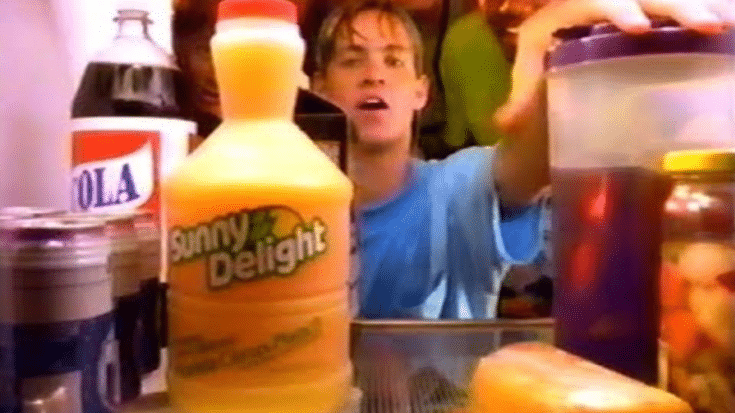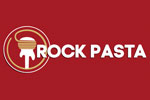10 Discontinued ’90s Drinks Nobody Misses

via Dino Drac's Retro Commercials! / YouTube
The 1990s saw a wave of new drinks hitting the market, many of which failed to stand the test of time. These drinks were either too strange, too sweet, or just plain unnecessary. Looking back, it’s easy to see why these beverages faded into obscurity.
Crystal Pepsi
Crystal Pepsi was Pepsi’s attempt to create a clear cola. While the novelty of its transparency attracted some attention, its strange taste left most people unimpressed. Consumers couldn’t reconcile the familiar cola flavor with its unusual look. Despite heavy marketing, the drink disappeared after a few years.
The brand brought it back briefly in the 2010s for nostalgia, but it didn’t stick. Crystal Pepsi’s failure showed that novelty alone isn’t enough to make a drink successful. It’s remembered today more as a marketing misstep than a beloved product.
Surge
Surge was Coca-Cola’s response to Mountain Dew. Its bright green color and high caffeine content made it popular with teens, but it quickly gained a reputation for being too intense. Parents worried about the sugar and caffeine levels, which didn’t help its image.
By the early 2000s, Surge had disappeared from most shelves. Coca-Cola has since revived it in limited quantities, but its initial run is remembered as a short-lived experiment in extreme marketing aimed at youth.
Orbitz
Orbitz wasn’t just a drink—it was an experience. This clear beverage contained floating edible balls suspended in liquid, giving it a space-age vibe. Unfortunately, the texture and taste didn’t win over consumers. Most people found the gelatinous spheres unsettling rather than fun.
The drink’s failure was a case of style over substance. While Orbitz looked interesting, its strange flavor combinations and odd consistency led to its quick demise. It remains a curiosity rather than a cherished memory.
OK Soda
OK Soda was Coca-Cola’s attempt to appeal to Generation X with edgy branding and a deliberately vague flavor profile. The marketing focused on irony and counter-culture, but the actual drink tasted flat and uninspired. Its name didn’t help, as “OK” felt too underwhelming for a soda.
Consumers were confused about what OK Soda was supposed to be, and it never found a solid audience. The brand’s attempt to be different ultimately made it forgettable, and it was discontinued after a brief run.
Snapple Elements
Snapple Elements debuted with an ambitious theme, offering flavors named after natural elements like Earth, Fire, and Rain. While the concept sounded appealing, the drinks themselves didn’t live up to the hype. The flavors were inconsistent, and the packaging didn’t resonate with customers.
Snapple couldn’t sustain the momentum, and Elements faded from shelves. It’s now remembered as an overcomplicated product that didn’t quite hit the mark, unlike Snapple’s more straightforward teas and juices.
Fruitopia
Fruitopia was Coca-Cola’s attempt to capitalize on the “New Age” trend of the 1990s. The brightly colored drinks featured bold flavors and psychedelic branding. While initially popular in school vending machines, the overly sweet taste eventually turned people away.
By the early 2000s, Fruitopia was replaced by other drinks in Coca-Cola’s lineup. Its failure highlighted the importance of balancing flavor with marketing. Despite its initial success, Fruitopia couldn’t maintain its place in the market.
Josta
Josta was the first energy drink from a major American soda company, combining guarana with soda for an extra caffeine kick. Its unique flavor was polarizing—some loved it, while others couldn’t stand it. The drink struggled to find a loyal audience.
Eventually, Josta was discontinued, making way for other energy drinks like Red Bull to dominate the market. It’s now a nostalgic memory for those who enjoyed its bold taste.
Zima
Zima was a clear malt beverage marketed as a beer alternative. It was slightly sweet and had a light taste, which didn’t appeal to beer drinkers or cocktail fans. The drink’s odd positioning made it difficult to find a dedicated audience.
Zima eventually became a punchline, often mocked for its lack of identity. While it has seen occasional revivals, its original run remains a symbol of ’90s drinks that missed the mark.
Pepsi Blue
Pepsi Blue was launched as a berry-flavored cola with a bright blue color. While its bold look grabbed attention, the taste left much to be desired. Many found the combination of berry and cola flavors too artificial and cloying.
Despite heavy promotion, Pepsi Blue’s sales never took off. It was pulled from the market within a couple of years, proving that a unique appearance isn’t enough to guarantee success.
Sunny Delight Carbonated
Sunny Delight tried to branch out by releasing a carbonated version of its popular orange drink. However, the idea didn’t resonate with fans of the original. The fizzy texture clashed with the familiar taste, leaving many consumers confused.
The drink quickly disappeared, and Sunny Delight stuck to its non-carbonated roots. The failed experiment showed that not every twist on a classic product is a good idea.




























